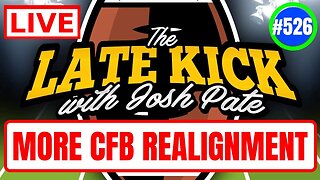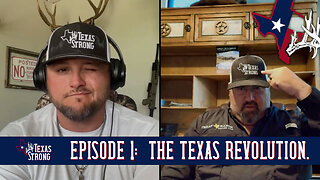"In Search of the Unknown", Book 2, by Robert W. Chambers
Chapter 6-8: Expedition Beyond the Hudson Mountains
---
Chapter 6: 0:00:00
Chapter 7: 0:20:50
Chapter 8: 0:36:36
---
The text uses the spelling "dingue", but there is no such monodactyl, so I had no idea what sort of pronunciation to use for it. There is a real word "dingue", pronounced very differently from what I use here, but it means, as a noun, a madman or maniac. "Dingo" is listed as a synonym, however, which apparently, if wiktionary is to be believed, is an Australian slang term for a despicable person or a coward, while also being a type of wild dog native to Australia, and comports to the pronunciation I used. And then there's a breed of dog called the American Dingo, a.k.a. Carolina dog or yellow dog, or Dixie Dingo, but this is an extant species, not extinct, so not what is being referenced in the story. So, "dingo" it is. And since it's a fictional species invented for this story, you can't say I'm wrong ! ;-)
to cut dead is an idiom I know I am not familiar with, but means to pretend not to see someone you know, typically as a show of anger at that person. Since Chambers is an American author, and from New York no less, it's probably a function of time rather than place that I have not heard the term before.
"British America", in the time frame of this story, would be referring to Canada. As an American from the USA, I've actually never heard the term before now. Curious. Graham's Glacier and the Hudson Mountains appear to be completely made up for the story.
All the place names used here are fictional. I mean, some of them may be names of real places, but if so that is purely coincidental. For example, there really is a range called the Hudson Mountains, but in Antarctica. Since we know this story is set in "British America" (in this story used to refer to Canada), obviously it is not referring to the Antarctic range, so the use of that name in this story is not meant to reference the real Hudson Mountains, and is just coincidental. The Hudson Highlands exist in New York state, but very much to the south, just a short ways from New York City, so again, not the setting for the story.
Plover and ptarmigan are types of birds. Ptarmigans are a type of grouse that live in tundras.
batrachian = resembling a frog or toad
causerie = An informal conversation, or casual short written article, especially on a serious topic
badinage = humorous or witty conversation
tamarack = a species of larch (larix laricina) native to Canada
The pictures used are:
Chapter 6: "Huntington Library Gardens in April 2009 - Wisteria in full bloom" by Pamla J. Eisenberg from Anaheim, USA, used here under the Creative Commons Attribution 2.0 Generic license (https://creativecommons.org/licenses/by/2.0/deed.en).
Chapter 7: "valley of the ten peaks from sentinel pass" by John Johnston, used here under the Creative Commons Attribution 2.0 Generic license (https://creativecommons.org/licenses/by/2.0/).
Chapter 8: "Woolly", a scale recreation of a wooly mammoth, located by the entrance to the the Royal BC Museum's Natural History Gallery, by Flying Puffin, used here under the Creative Commons Attribution-ShareAlike 2.0 Generic license (https://creativecommons.org/licenses/by-sa/2.0/deed.en).
To follow along: https://www.gutenberg.org/files/18668/18668-h/18668-h.htm#VI
-
 1:50:42
1:50:42
Twisted History
1 day agoIllegal Dumping
42.9K20 -
 1:00:59
1:00:59
Kimberly Guilfoyle
3 days agoOn Their Records, It's No Debate: Trump & Biden Face off in Atlanta, Live with Jeffery Clark & Tim Murtaugh | Ep. 137
110K73 -
 4:27:58
4:27:58
MissesMaam
7 hours agoEvil Achievement Grind | Stardew Valley 💚✨
43K5 -
 51:36
51:36
Line Drive Podcast
8 hours agoEven after debate debacle, Dems say Biden is fine!
51.1K30 -
 2:17:12
2:17:12
vivafrei
19 hours agoEp. 217: Biden Debate Debacle; SCOTUS Jan. 6; SCOTUS Chevron; Trump AND MORE!
174K595 -
 2:00:31
2:00:31
RealAmericasVoice
9 hours agoNEXT MAN UP: STEVE BANNON, CHARLIE KIRK, AND JACK POSOBIEC
73K75 -
 1:16:29
1:16:29
The Late Kick with Josh Pate
12 hours agoLate Kick Live Ep 526: FSU’s ACC Exit | SEC vs Texas & OU | Lanning Is Kirby | EASports CFB25
55.3K6 -
 4:23:09
4:23:09
Due Dissidence
15 hours agoLiberals' Post-Debate MELTDOWN CONTINUES, Russ Interviews 'Pod Save America' Fans in NYC
65.8K75 -
 27:33
27:33
Texas Strong
2 days agoThe Texas Revolution - Episode 01 - 06-28-24
40.9K4 -
 LIVE
LIVE
Vigilant News Network
14 hours agoMedia Blackout: 10 News Stories They Chose Not to Tell You - Episode 29
669 watching